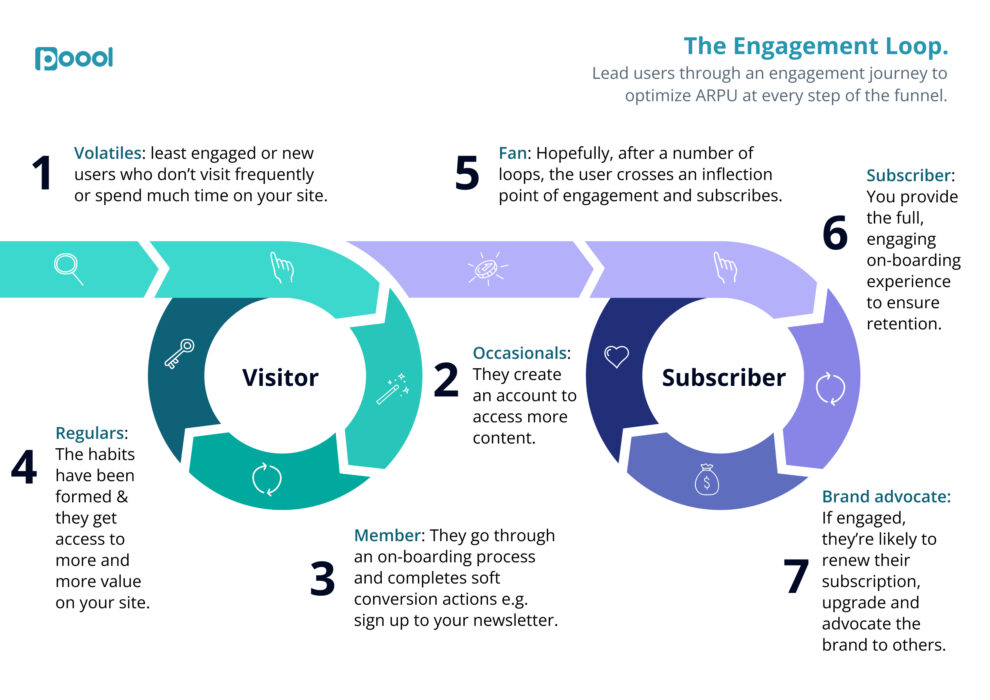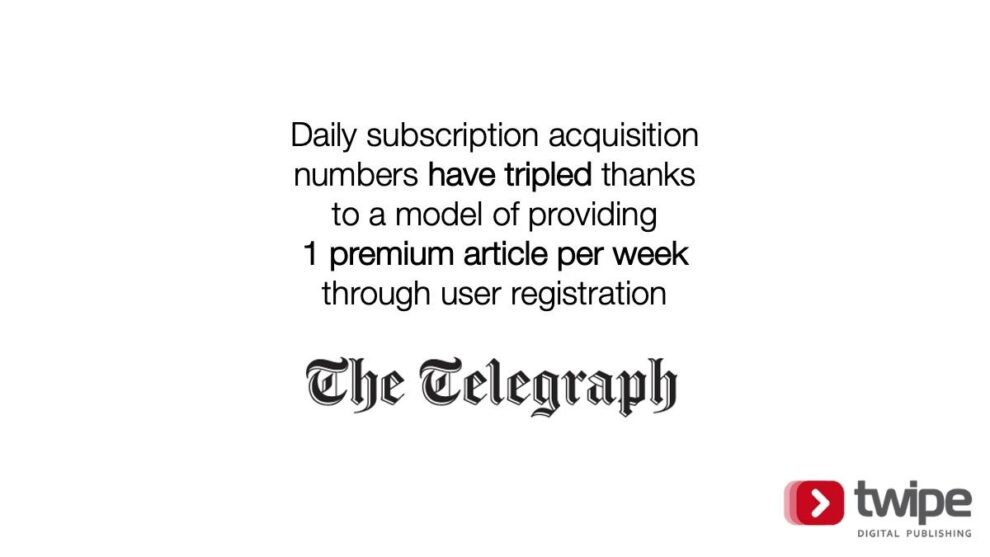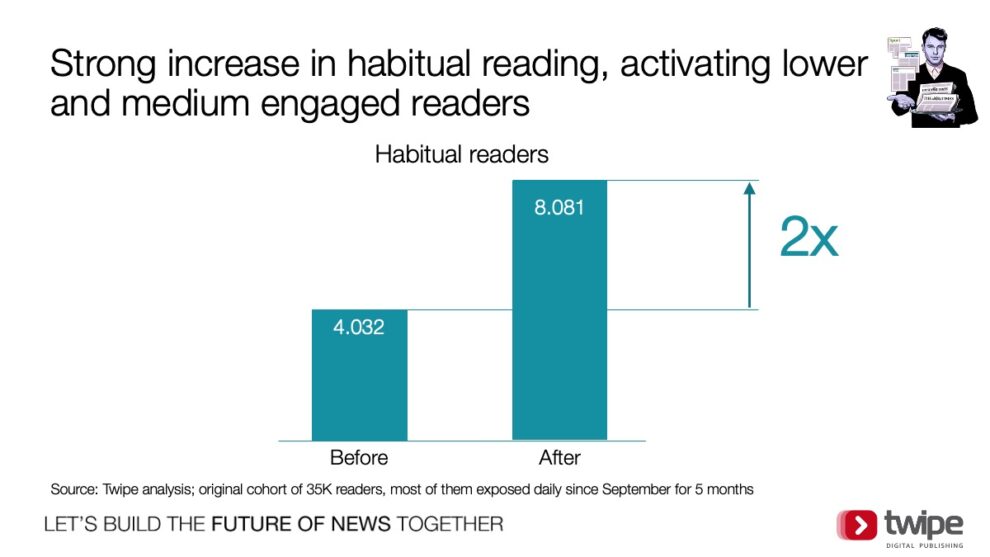In a world quickly becoming cookieless, first-party data is becoming a valuable currency. Having a strategy to de-anonymise readers as part of your audience engagement plans is a necessity. One tool that publishers have turned to for this are registration walls. Not only do they de-anonymise readers, but they can encourage greater engagement with content and boost conversion opportunities.
De-Anonymising readers and data gathering through registration walls
Registration walls mustn’t deter readers from engaging with content. So, finding the right way to gather registration data is key. For most publishers, this features as a sign-up request inside an article or upon arrival on the website. By passing through this registration wall, publishers can create a single reader identifier. This provides publishers with the ability to gather more data about users through their interactions on their websites. First-party data provides insights into user behaviour and content consumption habits to help learn more and to adapt subscriber strategies to convert users into paying readers.
Many publishers have experimented with metered registration wall models for their readers. Now, we have seen other types of publication adopt the same model. The Harvard Business Review readers can read a set number of articles a month before they either have to subscribe or register and create a free account. Upon creation of this free account, readers are offered 2 extra articles for the month before hitting the paywall.
Paris Match adapt their registration wall to the level of the reader’s activity. For more volatile and occasional readers, a registration wall blocks premium content and offers users access in exchange for registration. However, readers can also watch an ad to read the article. For already registered readers who visit the website on a frequent basis, a paywall blocks all premium content. The registration wall therefore acts as a soft conversion stage for those users who need it, to provide a stepping stone between the different stages of an engagement loop.

In the UK, The Telegraph has found success with a hard registration wall. Visitors to The Telegraph are required to give their email address to view one premium article each week. The publisher has seen success with the strategy. It has helped more than triple their daily subscriber acquisition numbers. The amount of content behind The Telegraph’s paywall has been growing. In 2016, 20% of content was behind the paywall, with this number jumping to 35% in 2019. The number has grown ever since.

After analysing the ARPU amongst clients, Poool found that registered users are 115 times more valuable than a volatile, anonymous user. They also discovered that registered members have a significantly higher propensity to subscribe than anonymous users and will bring the same monthly value as 20 registered users. With cookies soon becoming a currency of the past, publishers are in a strategic position to gather this data to stay ahead and build audience relationships.
Onboarding registered users to boost engagement
Using an onboarding flow for registered users works on the retention same principal as subscriber onboarding. Onsite onboarding journeys for registered users are rare, but some have successfully introduced these flows.
The New York Times add extra steps in their registration process to encourage users to sign up to their newsletters and download the NYT App. The US publisher also actively monitor registered user’s interactions with content and sends regular prompts to those who risk becoming zombies. These steps help to encourage engagement with their products to eventually convert these registered users into paying subscribers. With over 10 million paying subscribers, The New York Times have found success with conversion through the model.
Registration onboarding also frequently takes place via email. This sends reminders for registrants to engage with content. INMA recently conducted a study of daily newsletters from 46 news sites that offered free registration. They found that The Chicago Tribune and The Telegraph sent the most onboarding emails. The Chicago Tribune sent 45 emails of which 34 were promoting subscription offers. Meanwhile, The Telegraph sent 40 emails with 23 advertising subscription offers and 17 in the form of educational emails about The Telegraph or providing reading recommendations.

INMA themselves have also adopted this practise and send newly registered users an email a week after creating an account. This aims to make sure registered users are making the most of their access, promoting their newsletters, daily content and invitations to events. The personalised tone in their emails also helps to resonate with the recipients. Onboarding these registered be it on web or via email is a great way to start engagement relationships with users and could lead to increased brand loyalty, and ultimately subscriptions.
Reader data driving habit formation through personalisation
By providing publishers with data, readers automatically expect better experiences. One way in which publishers do this is through content personalisation. Personalisation is a tool that publishers can use to reward readers with the content that they want, be that through personalised newsletters, feeds or pages. Dutch publisher NRC launched their new subscriber-only personalised newsletter “Middag” through the JAMES Launch Partner Programme. With over 40,000 subscribers exposed, Middag achieves a 50% Open Rate and a 15% Click Rate, a clear audience engagement success.
Their personalised newsletter also formed all important reader habits. Upon experimentation of splitting subscribers into separate groups, we witnessed a 26% increase in habitual reading amongst readers exposed to the JAMES hybrid v2 model combining trending and personalised news. What is particularly interesting is that these habits have also been formed with lower and medium engaged readers, boosting activation and engagement levels for publishers.

These data rewards are an important part of the habit formation loop and helps to boost reader engagement. A habit is formed when people go through the 4 different elements of the habit loop enough times over a 66 days period. The 4 different elements required are trigger, action, variable reward and investment.
Personalised newsletters are a trigger leveraged by many publishers. A few simple strategies to ensure your newsletter strategy can leverage the Habit Formation Loop include:
- Your newsletter appearing in the mailbox of readers is the trigger to initiate a habitual behaviour
- Optimising time and subject line is important to ensure the trigger is easily actionable
- After opening, it’s the content that offers the variable reward and drives the investment
- Readers invest their time and emotions by interacting with the email through clicks or other ways
Learn how your newsroom can leverage registration walls and habit formation in our webinar with Poool on 18th May. Find out more information and sign-up here.

